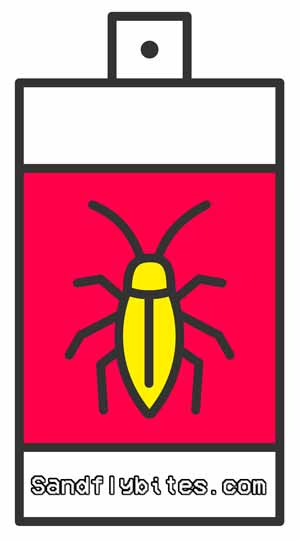
10 Jan Sandflies in Australia (Midges and Sandfly)
Sandflies in Australia: You will find sandflies on nearly all wonderful beaches of Australia.
Sandflies in Australia
Sandfly: The bloodsucking nightmare in Australia
Sandfly bites Symptoms in Australia:
 What are the first steps to take after I got a new sandfly bite in Australia? (FAQ)
What are the first steps to take after I got a new sandfly bite in Australia? (FAQ)
The first thing you should do after a new sandfly bite is apply heat to the sandfly bite. This will destroy the proteins of the histamine in the salvia of the sandflies, which initially causes the itching. Our top tip to do so is the “bite away“ bite pen, which heats up to 51°C, and is very safe to use. You can also use a towel and very hot water
But take care not to hurt yourself!!!
Can I do anything to prevent sandflies from biting in Australia?
No, there is nothing you can do or apply on your skin that will 100% prevent sandflys to bite you. You can apply coconut oil on your skin to make it harder for the sandfly to land on you. Sandflies have also difficulties to bite through the lubricating oil film of the coconut oil.
Use Deet!
Is there anything that will completely stop the itching of sandfly bites in Australia?
There are several really good sprays and lotions to put on the bite afterwards
As the itching is caused by the histamine in the salvia of the sandfly you can get anti-histamine-tablets in the pharmacy, which will help you a lot (also they will make you a but tired)
How long do they last in Australia?
Every sandfly bite heals differently depending on your sensitivity and on the spot you have been hit. The less you touch (or scratch) the sandfly bite, the quicker it will be healed off. In general it can be said that it take around 3 days until 1,5 weeks. But check out our amazing tips, which will help you getting over the sandfly bite
Are sandfly bites dangerous?
In most of the cases sandfly bites are a real pain in the neck but in some cases there might be possibilities to carry diseases. Plz take a look to WHO
We have put together hygiene tips to be prepared for bites (and other situations) even on the beach here…





news
Posted at 10:01h, 07 AprilGreetings! Very helpful advice in this particular article!
It is the little changes that make the most important changes.
Many thanks for sharing!